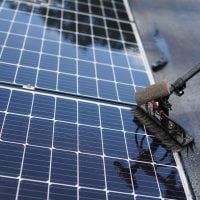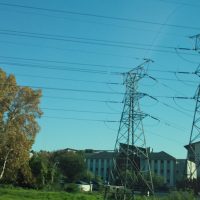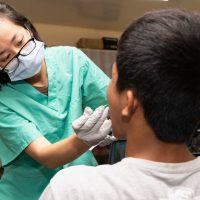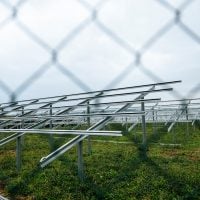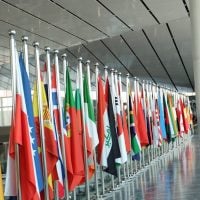Deadline: 31-Jan-23
The European Commission (EC) is seeking applications for Arctic Youth Dialogues Grant.
The Arctic is of key strategic importance for the European Union, in view of climate change and environmental degradation, the potential for critical raw materials as well as geostrategic influence. The Joint Communication responds to these geopolitical, environmental, economic, security and societal challenges and opportunities.
It seeks to foster cooperation with likeminded partners on sustainable approaches to overcome challenges and promote a fair and inclusive management of opportunities. The EU will consolidate further its presence and visibility on the global scale and in international processes on different Arctic strategic priorities, while promoting European interests, standards and values, and enhancing the role of the EU as a key actor in matters of importance for the Arctic.
There are eight Arctic States: Canada, the Kingdom of Denmark (Denmark, Greenland, Faroe Islands), Finland, Iceland, Norway, the Russian Federation5 , Sweden, and the United States of America.
Objectives
- The global objective of this call for proposals is to increase the contribution of young people to the implementation of the updated EU policy for the Arctic, bringing the Arctic to the EU and the EU to the Arctic.
- The specific objective of this call for proposals is to promote dialogues with the Arctic youth to strengthen engagement, empowerment and participation of young people in policy-making processes addressing the challenges faced by the Arctic. In line with the EU Arctic policy and the Youth Action Plan in EU External Action, the priority areas of this call for proposals are:
- Engage, Empower and Connect the Arctic Youth, with a particular attention to the inclusion of women and Indigenous Peoples.
- Promote the European Union’s values – such as supporting and promoting democracy, the rule of law and respect for human rights, pluralism, non-discrimination, tolerance, justice, solidarity and equality.
- Work together on sustainable and inclusive development, the preservation of biodiversity and the fight against climate change.
Aims
- Actions under this call should aim to:
- Foster dialogue and cooperation between European and Arctic young people and their organisations in general, and on the priority areas specifically;
- Generate understanding, knowledge and build leadership capacity of young people living in the Arctic to create politically engaged deliverables in the priority areas defined (e.g. Arctic Youth Dialogue);
- Strengthen contribution, engagement and participation of young people in policy-making in multilateral fora to enable young people to convincingly advocate for their input on global issues and processes;
- Empower young people and support youth-led initiatives having a positive impact in their immediate community and the wider society. Specific attention will be given to support young people’s role in achieving the overall objectives of the external dimension of the European Green Deal;
- Build initiatives between various youth groups and organisations within the Arctic, between the Arctic and the European Union, between the Arctic and the rest of the world; create / strengthen / connect local, regional, national and international networks, contributing to their long term sustainability;
- Facilitate exchange through new, innovative and immersive methods. Artistic creation and culture will be considered as an important vehicle;
- Create dialogues with, and inform Arctic and EU policy decision and policy-makers of the views and recommendations of young people’s representing organizations;
- Capitalise on existing national / regional relevant initiatives in the Arctic and when relevant in the international scene;
- Ensure synergies with other actions carried out by the EU and EU Delegations in this area (e.g., crossborder programmes, Horizon Europe, ERASMUS+, European Solidarity Corps, Creative Europe, Media, students on ice, etc.).
Funding Information
- Minimum amount: EUR 1,500,000
- Maximum amount: EUR 2,000,000.
Eligibility Criteria
- In order to be eligible for a grant, the lead applicant must:
- be a legal person, and
- be non-profit-making, and
- be a specific type of organisation such as: non-governmental organisation, public sector operator, local authority/regional organisation, civil society organisation, local/community group, cultural institution, artistic school, academic and research institution, and
- be established in10 a Member State of the European Union or in one of the Arctic States11 as, and
- be directly responsible for the preparation and management of the action with the coapplicant(s) and affiliated entity(ies), not acting as an intermediary.
- Potential applicants may not participate in calls for proposals or be awarded grants if they are in any of the situations listed in Section 2.6.10.1 of the practical guide.
- The minimum number of co-applicants is two (2) and at least one of them must be established in one of the Arctic States
- If the lead applicant is established in a EU Member State, at least one co-applicant must be established in a non-EU country listed. If the lead applicant is established in a non-EU country listed , at least one co-applicant must be established in a EU Member State.
- Co-applicants participate in designing and implementing the action, and the costs they incur are eligible in the same way as those incurred by the lead applicant.
- Co-applicants must satisfy the eligibility criteria as applicable to the lead applicant himself.
- Co-applicants must sign the mandate.
- If awarded the grant contract, the co-applicant(s) (if any) will become beneficiary(ies) in the action (together with the coordinator)
- In addition, please note that contracts cannot be awarded to or signed with applicants included in the lists of EU restrictive measures.
- Affiliated entities
- The lead applicant and its co-applicant(s) may act with affiliated entity(ies) Only the following entities may be considered as affiliated entities to the lead applicant and/or to coapplicant(s):
- Only entities having a structural link with the applicants (i.e. the lead applicant or a co-applicant), in particular a legal or capital link.
- This structural link encompasses mainly two notions:
- The lead applicant and its co-applicant(s) may act with affiliated entity(ies) Only the following entities may be considered as affiliated entities to the lead applicant and/or to coapplicant(s):
- Control, as defined in Directive 2013/34/EU on the annual financial statements, consolidated financial statements and related reports of certain types of undertakings:
- Entities affiliated to an applicant may hence be:
- Entities directly or indirectly controlled by the applicant (daughter companies or first-tier subsidiaries). They may also be entities controlled by an entity controlled by the applicant (granddaughter companies or second-tier subsidiaries) and the same applies to further tiers of control;
- Entities directly or indirectly controlling the applicant (parent companies). Likewise, they may be entities controlling an entity controlling the applicant;
- Entities under the same direct or indirect control as the applicant (sister companies).
- Entities affiliated to an applicant may hence be:
- Membership, i.e. the applicant is legally defined as a e.g. network, federation, association in which the proposed affiliated entities also participate or the applicant participates in the same entity (e.g. network, federation, association,…) as the proposed affiliated entities.
- The structural link shall as a general rule be neither limited to the action nor established for the sole purpose of its implementation. This means that the link would exist independently of the award of the grant; it should exist before the call for proposals and remain valid after the end of the action.
For more information, visit https://bit.ly/3GyitzD


